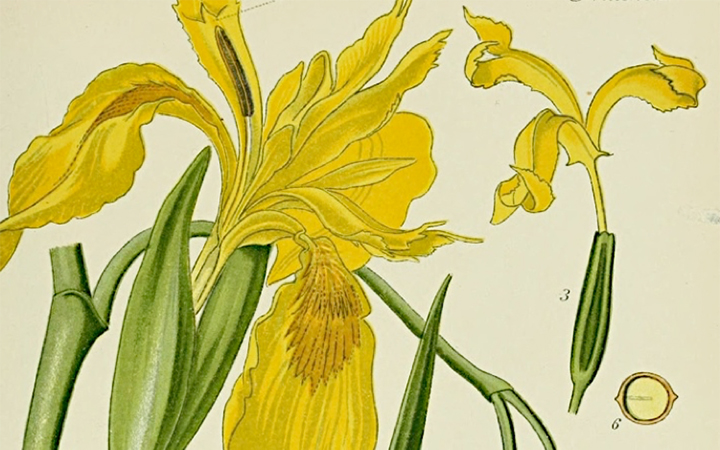Iris pseudacorus (yellow flag, yellow iris, water flag) is a species in the genus Iris, of the family Iridaceae. It is native to Europe, western Asia and northwest Africa. Its specific epithet, meaning “false acorus,” refers to the similarity of its leaves to those of Acorus calamus, as they have a prominently veined mid-rib and sword-like shape.
It is an herbaceous flowering perennial plant, growing to 100–150 centimetres (39–59 in) (or a rare 2 metres (6 ft 7 in)) tall, with erect leaves up to 90 centimetres (35 in) long and 3 centimetres (1.2 in) broad. The flowers are bright yellow, 7–10 centimetres (2.8–3.9 in) across, with the typical iris form. The fruit is a drycapsule 4–7 centimetres (1.6–2.8 in) long, containing numerous pale brown seeds. I. pseudacorus grows best in very wet conditions, and is often common in wetlands, where it tolerates submersion, low pH, andanoxic soils. The plant spreads quickly, by both rhizome and water-dispersed seed. It fills a similar niche to that of Typha and often grows with it, though usually in shallower water. While it is primarily an aquatic plant, the rhizomes can survive prolonged dry conditions.
Large I. pseudacorus stands in western Scotland form a very important feeding and breeding habitat for the endangered corn crake.
I. pseudacorus is one of two iris species native to the United Kingdom, the other being Iris foetidissima(stinking iris).
(From Wikipedia, March 2015)




